Salvage Design with Retrouvius Co-Founder Maria Speake
Known for their innovative and intelligent use of salvage materials, West London based Retrouvius have built their way to an essential and pioneering studio with a vast array of domestic and commercial projects. We chat to co-founder Maria Speake about where it all began, her love of materials and how she chooses to incorporate rugs into their design projects.
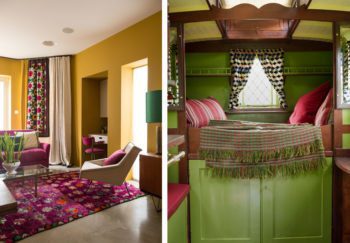
From left to right: Family House, Notting Hill, Tom Fallon. C19th Fairground Traveller’s Caravan, Debi Treloar
What is it about using salvaged materials that you find inspiring?
I am always drawn to things that are slightly rejected, from items in a skip to shopping on a sale rail. I like the fact that others have rejected something. I find it more inspiring to give something a new life, it’s more of a challenge. When it comes to rugs, I quite like the ones that are a bit tattier so therefore they really do need a whole new life.
How did you get into salvaging?
It was from being a student in Glasgow and from skips and demolition. It really was before the whole green movement really got going. At my architecture school, there was no sense of consciousness and responsibility towards the environment or an understanding of your materials, where your materials come from.
Glasgow at that stage had once been so wealthy by being a port city and having a massive manufacturing industry exporting so much that it made, there would be masses of cast iron for example, that was shipped out to all around the empire. To bring the ships back, they would use a lot of timber as ballast to keep the ships weighed down so there would be amazing mahogany, and pitch pines coming back to Glasgow. Some of the buildings there were filled with gorgeous, amazing quality timber. For me, I’m very much interested in the materiality of things and the natural understanding of textiles.
How do you incorporate rugs and textiles into your projects? Do you start off with a specific fabric or print and build the project from there?
Yes absolutely. We also do masses of the architecture so a lot of people can find it overwhelming, stressful, and very abstract when you’re talking about spatial three-dimensions, but if they are suddenly really inspired by a fabric, it makes people feel so much more relaxed about making these other quite big architectural decisions.
Sometimes it is the last thing to be added in, and that can make it more fun for us because we can bring eight or ten rugs to a room and then show them how the room changes completely depending on the base.
One thing that really stands out to me in your design projects is your use of rich colour and texture. How do these elements play a part in your projects?
Each client and each building is different so it’s about marrying what is going to look right in the building with the client’s tastes. It’s about educating the client into what materials and colours sit comfortably in certain buildings. We also love to find cost effective fabrics that are still produced in the UK.
Do you have any tips for incorporating salvaged objects in your home?
I think it’s about maintaining flexibility. It’s now more important to find pieces that you can take with you. I think it’s really nice to see that kitchens are stepping back to loose fit furniture based pieces. If we’re looking at salvaged things, it’s about how they’re put in a lot of the time. A lot of furniture and cupboards are built in so actually the only thing that you can salvage are the front cupboard doors. Other people are designing now that the whole piece can come out, which is great.
Also, just to enjoy colour with paint, because it’s so cheap and easy to change. With lighting, the flexibility of going back to the simple pendant and gallery, you can change your shade continuously and they’re relatively inexpensive to buy. The atmosphere and lighting conditions can change dramatically.
Are there any rugs that are continuous winners with clients?
The Beni Ouarain Berber rugs are great and people love the cosiness. The colour is great because they’re very light reflective. Especially in older buildings they bounce the light down locally so it’s quite flattering.
The character of handmade textiles is wonderful. That is the joy of things that are a little imperfect. It feels more human and feels much more accessible. Modern and historic conservation and craft have come back and realised they don’t have to be at war with each other.
What interesting and perhaps unconventional ways have you used rugs or salvaged textiles before?
I rarely use a rug as a cushion as I don’t think they’re cosy enough to snuggle up to but I will buy a lovely old fragment to use for something. It would be more about taking an element and making it more precious. I like to use them as a front panel on a curtain so the light will never directly get to it, to protect the vegetable dyes from the sunlight.
I’ve used the Turkish Perde for ottomans and for use as panels within curtains. I like having things in a panel where they can remain in their original form. I like using them when they’re not stitched in or fixed because a lot is about their movement.
Do you have a favourite project?
It’s all about the building and the people so actually no, I love that each different job will have something really fabulous, something that you’ll have learnt, and something that’s really tricky. One project was a beautifully designed and detailed 1976 boat. Most people don’t associate textiles with boats and so it was really fun to do things on a boat that you would never usually do. For example, we used long, full length hanging draped curtains, which you would never see. A lot of cabins feel quite low because of the low ceiling height so it was about how can we accentuate the height.
Can you describe the Retrouvius style?
We are all about materials. Rather than the Bauhaus modernist phrase of “Less if More”, my latest phrase is “More is Less.” The more of one colour you have, it then becomes neutral. If you’ve got lots of the same type of thing, whether it’s the colour, the wood or tiles as a whole lot, then it’s great. What becomes frenetic, is when you’ve got lots of different things together.
All images supplied by Retrouvius
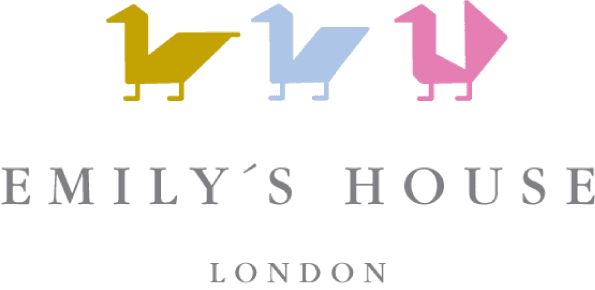
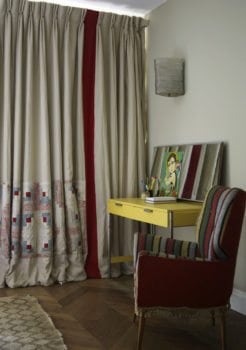
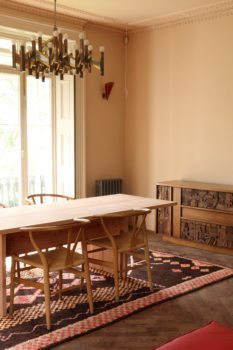
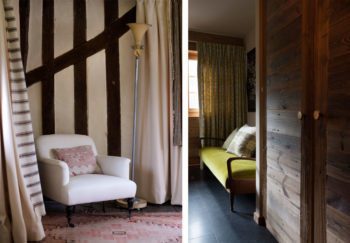
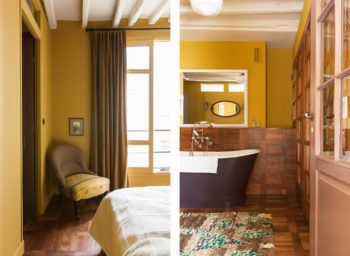

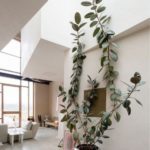
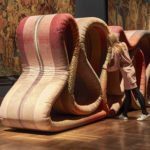
Leave a Reply
Want to join the discussion?Feel free to contribute!